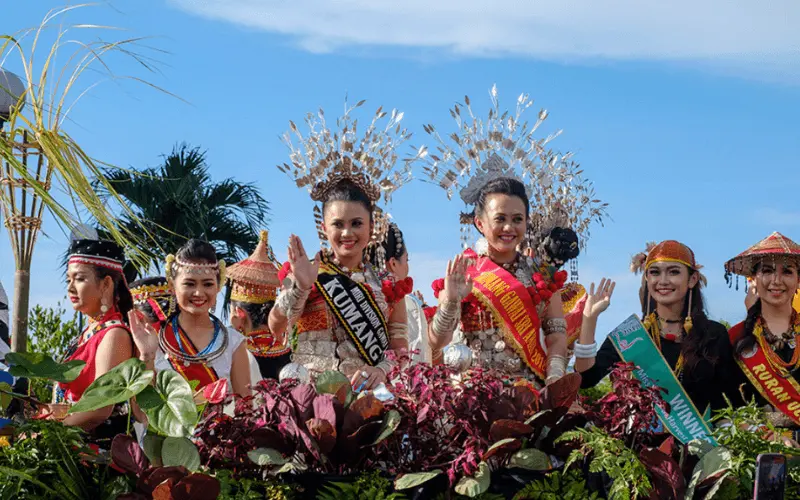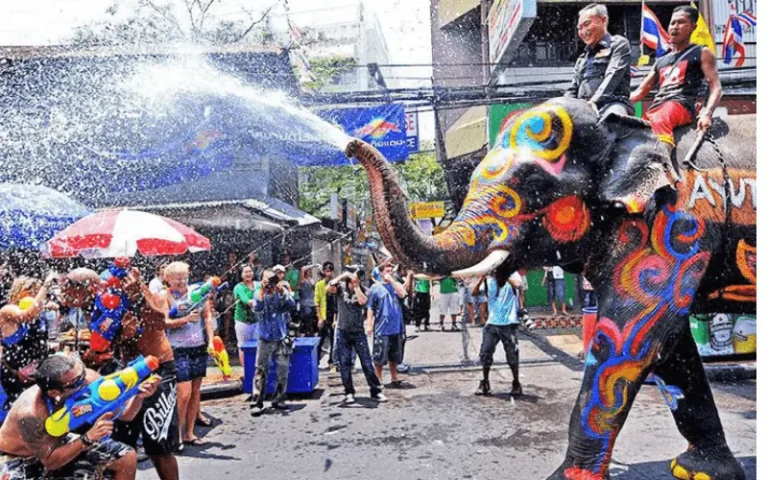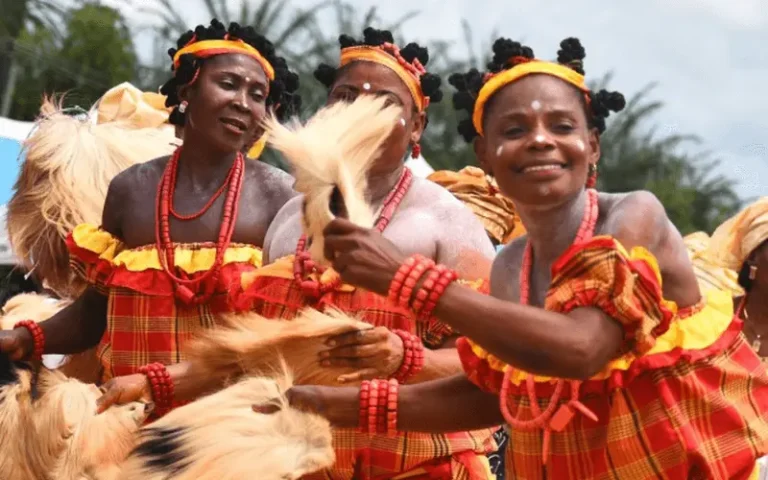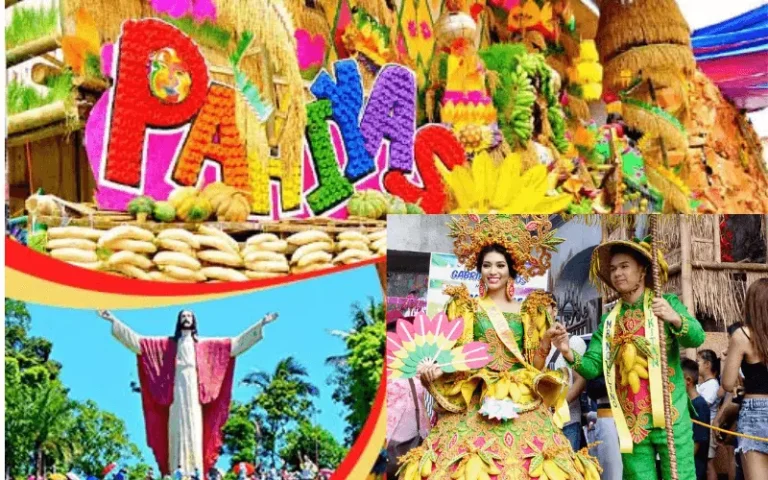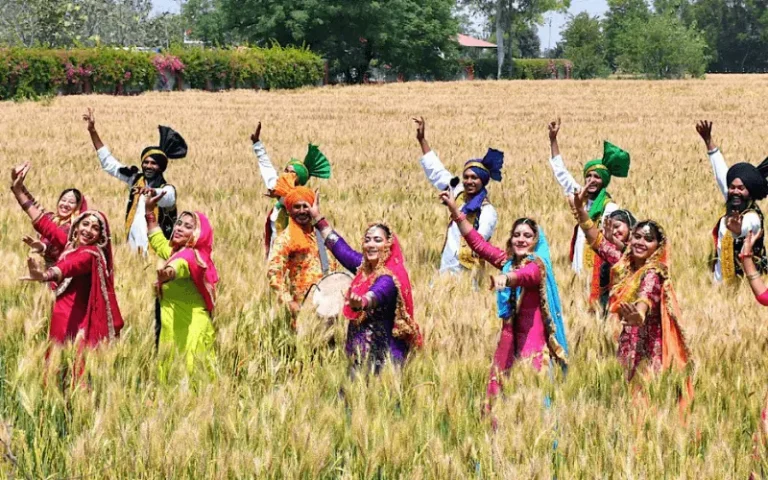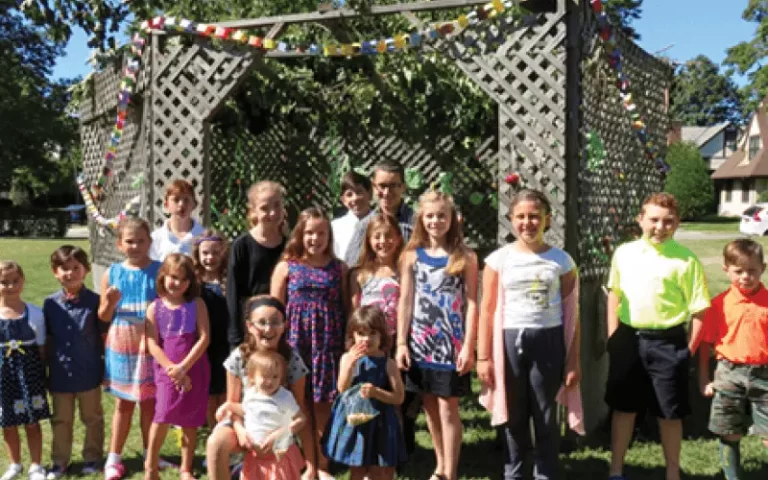Gawai Dayak (Malaysian Thanksgiving Festival)
The Gawai Dayak Festival, once known as Dayak Day or Sarawak Day, is a special yearly celebration for the Dayak people in Sarawak, Malaysia. It used to be on June 1 and 2, but now also includes Sarawak Day on July 22. This festival celebrates the harvest and brings together different indigenous groups like the Iban, Bidayuh, Orang Ulu, Kayan, Kenyah, and Dayak from West Kalimantan, with colorful rituals, delicious food, and traditional dances.
It’s a big deal for the people of Sarawak, the largest state in East Malaysia on Borneo Island. Originally living in longhouses, many Dayak folks now live in cities while still holding onto their traditions. Gawai Dayak is their way of thanking the gods after a successful rice harvest, marking the end of the harvest season and a time to rest before the next planting.
Stay tuned to learn all about this festival.
What does Gawai Dayak mean?

Gawai Dayak is a term that combines two parts: Gawai, which signifies a ritual or festival, and Dayak, a collective name encompassing various tribes like Iban, Bidayuh, Kayan, Kenyah, Kelabit, Murut, and others. Essentially, it represents the festivities and ceremonies these indigenous groups observe, marking significant cultural and traditional events within their communities.
History of Dayak Festivals
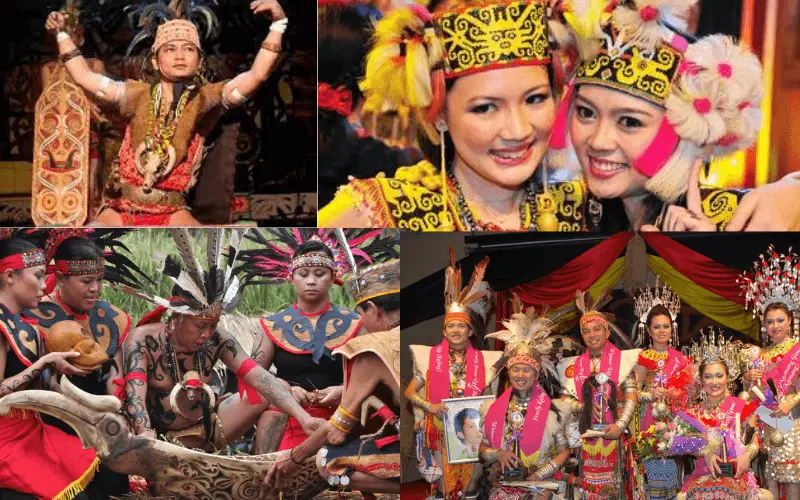
The Dayak people, who rely on rice as their main food, celebrate their hard work after the harvest season. This celebration, known as Gawai Dayak, officially began being observed at the state level on September 25, 1964. Earlier, during the rule of the Brooke Raj (the British dynasty in Sarawak from 1841 to 1946), it was known as Sarawak Day.
The festival was formally recognized as a public holiday on September 25, 1964, replacing Sarawak Day. The inaugural celebration of Dayak Festival at the state level happened on June 1, 1965. Over time, Gawai Dayak has grown to represent unity, dreams, and optimism for the Dayak community. Today, it holds a central place in Dayak’s social life. This transformation, extensively chronicled in sources like Bawang Dayak Wikipedia, reflects the festival’s significance in uniting the Dayak community and showcasing their heritage.
Now let’s talk about the dates of Dayak Festival.
Gawai Dayak Festival dates 2024, 2025,2026,2027?
Dayak Festival dates 2024, 2025,2026,2027 are mentioned in the following table:
| Year | Date | Day |
|---|---|---|
| 2024 | May 20 | Monday |
| 2025 | May 20 | Tuesday |
| 2026 | May 20 | Wednesday |
| 2027 | May 20 | Thursday |
Who Celebrate Gawai?
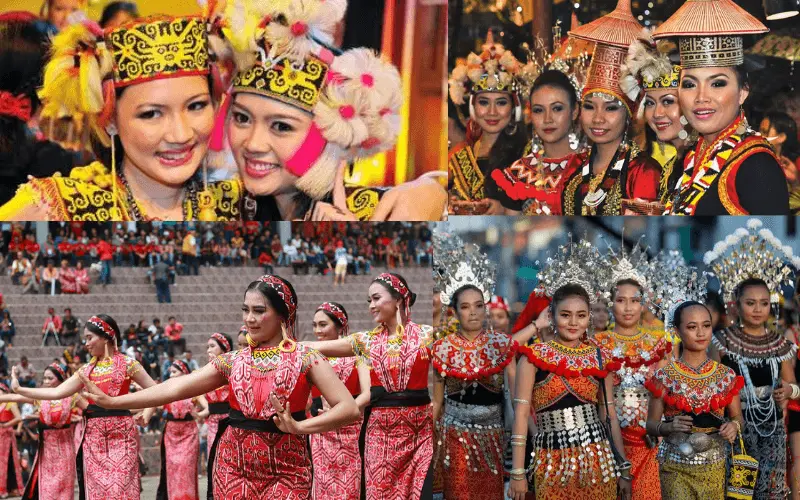
The Dayak people in Sarawak, Malaysia primarily celebrate the Gawai festival. This indigenous community holds this festival as a significant cultural event, bringing together various tribes like the Iban, Bidayuh, Kayan, Kenyah, Kelabit, Murut, and more, to commemorate their traditions and heritage.
Gawai Dayak Wishes
Dayak Festival Wishes are heartfelt greetings exchanged during the festive occasion of Dayak Festival. They embody sentiments of joy, prosperity, and good health extended from one individual to another, signifying well-wishes for a fulfilling and prosperous year ahead. These wishes often encompass phrases like “Gayu Guru Gerai Nyamai,” which translates to “Long Life, Health, and Prosperity,” expressing the sincere hope for enduring well-being and success among friends, family, and fellow celebrants.
How is the Gawai Dayak Festival Celebrated?
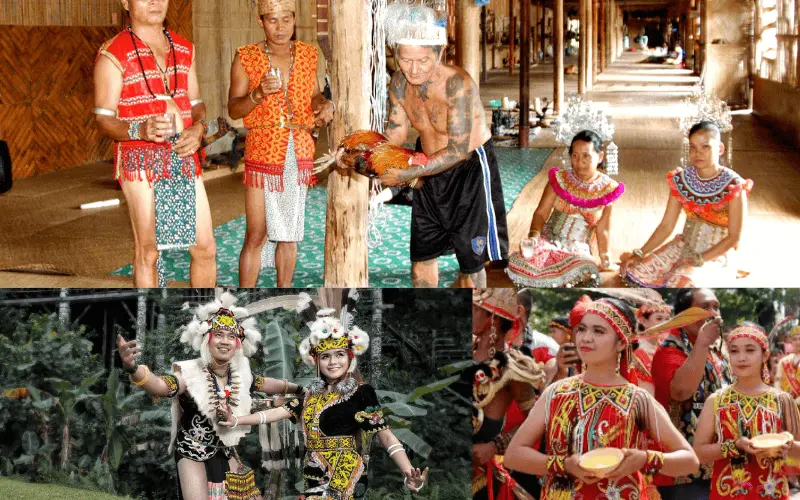
The Dayak Festival, a revered celebration in Sarawak, intertwines religious significance with rich social customs. It stands as a testament to unity among various Dayak tribes like Iban, Bidayuh, Kayan, Kenyah, and more. Preparations begin early, bustling with the brewing of Tuak (rice wine) and crafting traditional delicacies like Penganan (rice flour cakes) and Kuih Sarang Semut (crispy snacks).
The festival’s eve starts with Muai Antu Rua, a ceremony casting away the spirit of greed, marked by discarding unwanted items to rid the area of bad luck. The Miring ceremony follows a heartfelt offering to express gratitude for a bountiful harvest. Dinner brings everyone together, mingling and conversing until the midnight toast with Ai Pengayu, wishing for a long life and prosperity.
The festivities blossom with dances, music, and poetry, showcasing the vibrancy of Dayak culture. The following day offers a myriad of activities from cock-fighting to ngajat (traditional dance) competitions. Homes are open to visitors, welcoming them with Tuak in the masu pengabang tradition. The celebrations can span days, fostering cultural exchanges and merrymaking.
In Kuching, the festival commences with the World Harvest Festival, featuring international cultural performances, beauty pageants, and unique competitions like the “Iron Man” challenge. Longhouses open their doors for open houses, treating guests to traditional cuisines.
Throughout Sarawak, the festival offers a blend of authentic rituals and diverse Christian celebrations. From the Skrang River to Annah Rais, this festival not only celebrates a rich harvest but also invites visitors to immerse themselves in the vibrant tapestry of Malaysian cultures.
Orang Ulu Door Carvings adorn the entrances, adding intricate and meaningful designs to the festival’s ambiance. Gawai Dayak Food entices with its flavors, offering a taste of authentic Dayak cuisine. Gawai Dayak Dance performances fill the air with vibrant rhythms and graceful movements, captivating all who witness them. The Gawai Celebration is a colorful tapestry interwoven with tradition, joy, and cultural exchange.
Regional Variations in Dayak Festival Celebrations
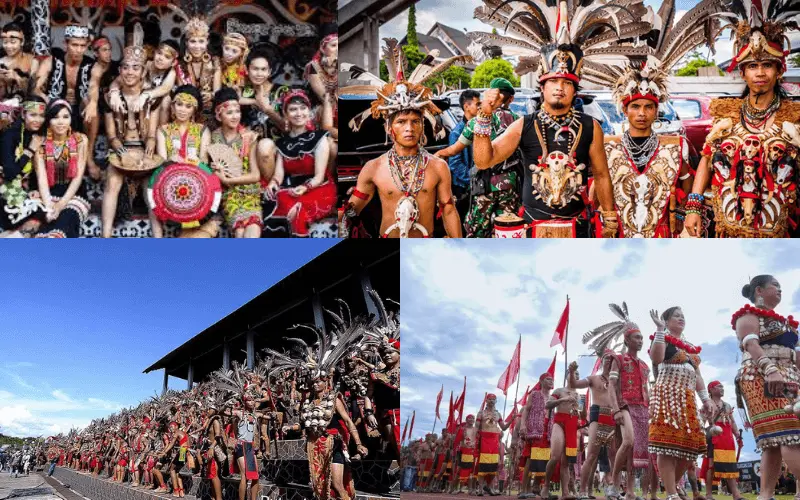
Each variation adds distinctive threads to the cultural tapestry of Gawai Dayak, painting a vibrant mosaic of traditions and unity among the Dayak people.
Read other Harvest Festival Guides by Days Discuss
Mid-Autumn Festival (Moon Festival)
Holi Festival 2024| All you need to know
Sukkot 101| Quick Guide to Celebrating this Joyous Festival
Songkran 2024 (Thailand’s New Year Water Fight Festival)
Chuseok 2024| Korean Thanksgiving and Harvest Festival Quick Guide to Celebrate
Thanksgiving Day: History, Global Celebrations, and 6 Amazing Games for Festive Fun
Pongal Festival (All You Need To Know)
Erntedankfest 2024| Thanksgiving in Germany
Mabon(Autumn Equinox)| All You Need To Know About Pagan Thanksgiving
Conclusion
The Gawai Dayak festival embodies unity and heritage, marked by elaborate rituals, vibrant traditional attire, and joyful gatherings. From preparations to offerings, dances, and sharing traditional drinks and dishes, it’s a celebration that embraces community, culture, and the spirit of togetherness.
Frequently Asked Questions
Why do people celebrate Gawai Dayak?
Gawai Dayak embodies a cherished symbol of unity, aspiration, and hope within the Dayak community. Celebrated fervently, it unites diverse tribes, fostering a collective spirit and a shared vision for a brighter, prosperous future.
Who takes part in Gawai Dayak?
Gawai Dayak is embraced by various tribes like Iban, Bidayuh, Kayan, Kenyah, Kelabit, Murut, and more, all actively participating in this vibrant celebration, honoring their cultural heritage and fostering unity among these diverse Dayak communities.
How do you greet a Gawai?
The customary greeting during Gawai is “Gayu Guru, Gerai Nyamai, Senang Lantang Nguan Menua,” expressing wishes for a long life, good health, and a comfortable, peaceful life.

